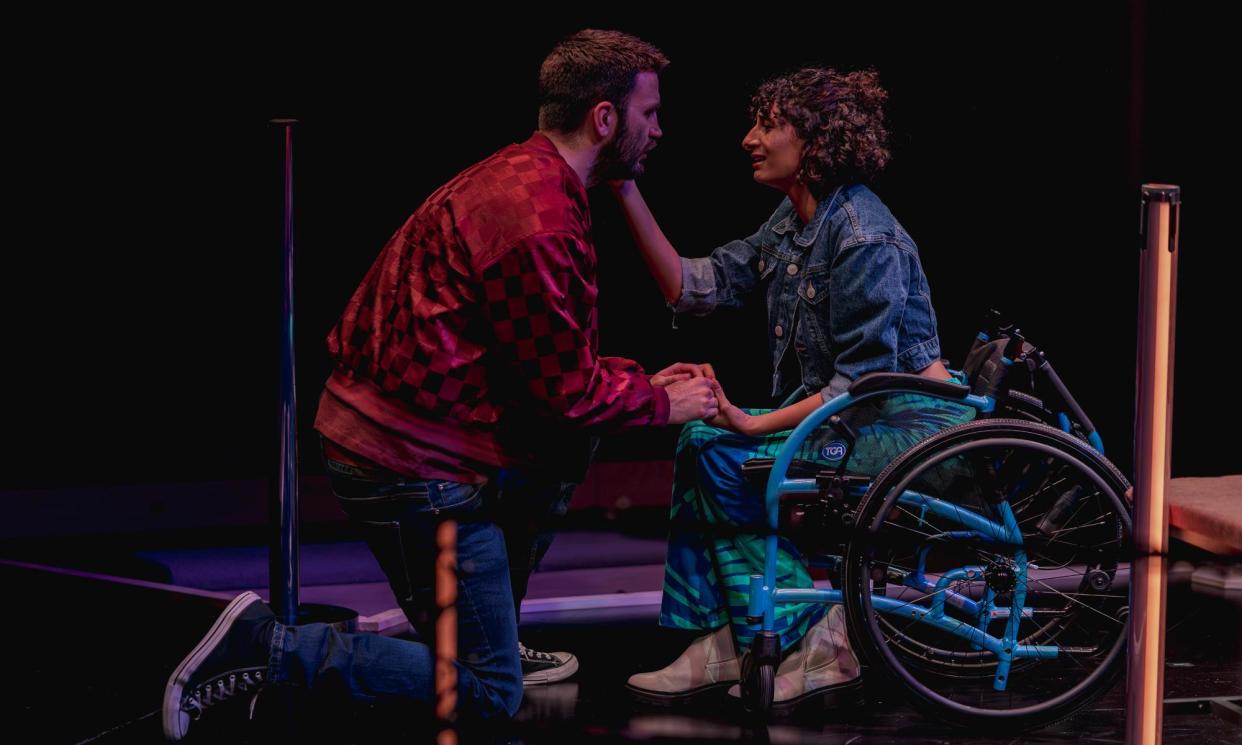Romeo and Juliet review – star-crossed lovers double up and dazzle

Unusually for a Shakespeare, the printed programme lists the actors’ names but assigns no parts. You soon see why. Jenny Sealey’s brisk co-production by Graeae and Shakespeare North Playhouse in association with Theatre by the Lake starts not on the streets of Verona but in the queue for a modern-day audition.
Her actors are used to playing extras not leads; whether they are a wheelchair user, neurodivergent or deaf, they are rarely the centre of the story. But when a script of Romeo and Juliet magically drops from the heavens, they agree to give it a go – audition be damned.
The parts are up for grabs. Reece Pantry has a shot at Romeo but gets voted down. Shreya M Patel hankers for Juliet but, for the time being, makes do with Lady Capulet.
Whatever the casting, there are two Romeos in matching red checkerboard jackets, one using BSL, the other spoken English. Likewise, there are two Juliets, their jackets blue. The switching would be too confusing to sustain and, once the dust settles, we get a double helping of Romeos in Petre Dobre and Ciaran Forrest, and of Juliets in Cherie Gordon and a delighted Patel.
The approach has three effects. The first is to create an air of joyful abandon; for all the play’s tragic undertow, it is an exuberant show, always aware of its own theatricality. “Jesus, that was brutal,” quips one actor after the two Romeos have slain Tybalt. If you are looking to be moved, or even for something vaguely subtle, this is not the Romeo and Juliet for you. Even the captioning by Christopher Harrison is playful.
Then there is the dazzling impact of watching two sets of actors play the same parts at once. The story belongs equally to the physically expressive BSL users and those using spoken word, mirroring each other on the in-the-round stage.
Sealey sometimes mixes the couples up and this creates the third effect: a sense of the universal experience of love and longing. The production’s radical challenge is to make us ask why we would favour one Romeo and Juliet over another.
At Shakespeare North Playhouse, Prescot, until 5 October. At Theatre by the Lake, Keswick, 12–26 October.


